Control of Substances Hazardous to Health (COSHH) Training Course
Quantity: 1
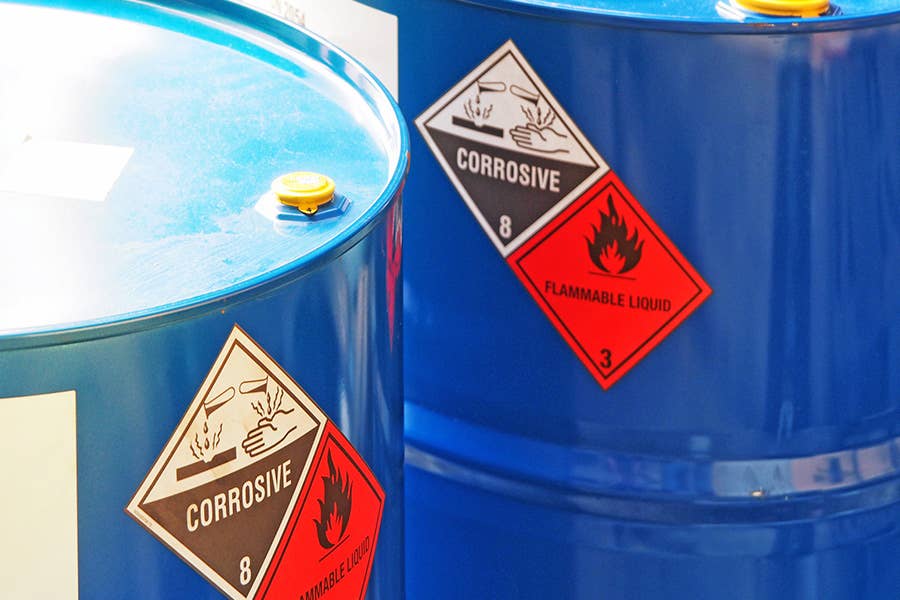
Duration 1-2 hours
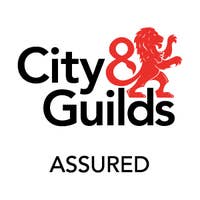
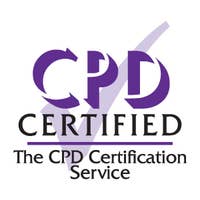
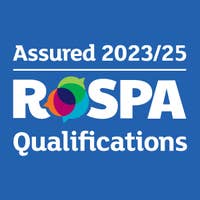
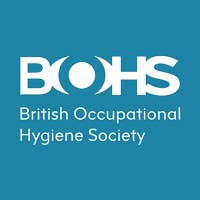

100% online training
Start when you like
Learn on any device (desktop, mobile or tablet)
Instant assessment and result
1 learner per course
Train teams of all sizes
Bulk discounts starting at 10% off 10 courses
Pay by invoice with 30 day payment terms available (5+ courses)
Includes a 10% discount for 10+ courses
Hazardous substances are present in almost all working environments and, every year, thousands of people at work suffer ill health from exposure to them. This COSHH training course provides you with an understanding of hazardous substances and the risks associated with them.
By taking this course, you will be equipped with the knowledge of what hazardous substances are, the dangers of exposure and the steps that can be taken to work safely. Whether you are an employee, an employer or self-employed, you will learn what your role is in working safely with hazardous substances and what you need to do to fulfil your responsibilities.
100% online training
Access anywhere
Same day digital certificate
Printed certificate posted next working day
Full audio voiceover
Assessment retakes at no extra cost
Written in compliance with the Control of Substances Hazardous to Health Regulations 2002 (COSHH)
City & Guilds Assured
Endorsed by BOHS
Accredited by CPD and assured by RoSPA Qualifications
Bulk discount for orders of 10+ courses
Downloadable module recaps of key learning points

Save on our courses when you buy more training upfront. Lock in a better price now and access the training whenever you need to. You can mix and match any of our courses too and get the discount off your whole order.
10+ courses = 10% off
50+ courses = 20% off
100+ courses = 30% off
500+ courses = 40% off
By the end of this course, you will be able to:

City & Guilds Assured
Thoroughly reviewed independently by City & Guilds learning and development experts, this course is approved as City & Guilds Assured. High Speed Training is the first e-learning provider to have online courses awarded City & Guilds Assured status.
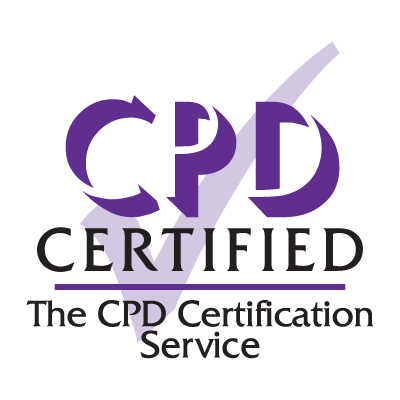
Accredited by CPD
All of our courses are accredited by the CPD Certification Service as conforming to universally accepted Continuing Professional Development (CPD) guidelines.
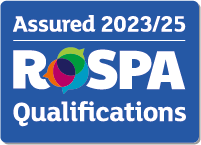
Assured by RoSPA Qualifications
This course is also assured by the Royal Society for the Prevention of Accidents through their RoSPA Qualifications Assurance System, as providing up-to-date, quality and content-approved training.
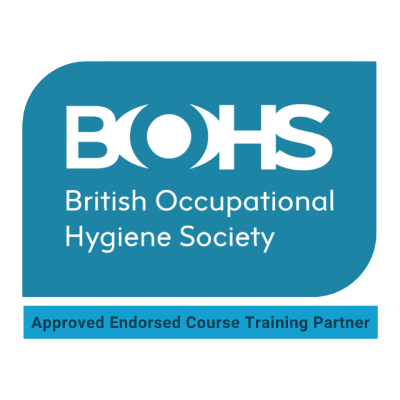
Endorsed by BOHS
This course has been reviewed and endorsed by the British Occupational Hygiene Society (BOHS) - the Chartered Society for Worker Health Protection. Meaning our training meets the highest standards for understanding and managing workplace health risks.
Recommended renewal:
1 year
What does this mean? This certificate does not have an expiry date, however, based on industry best practice guidelines there is a recommended renewal period.
Our in-house Learning Designers develop all of our courses to give you and your learners the most engaging training possible.
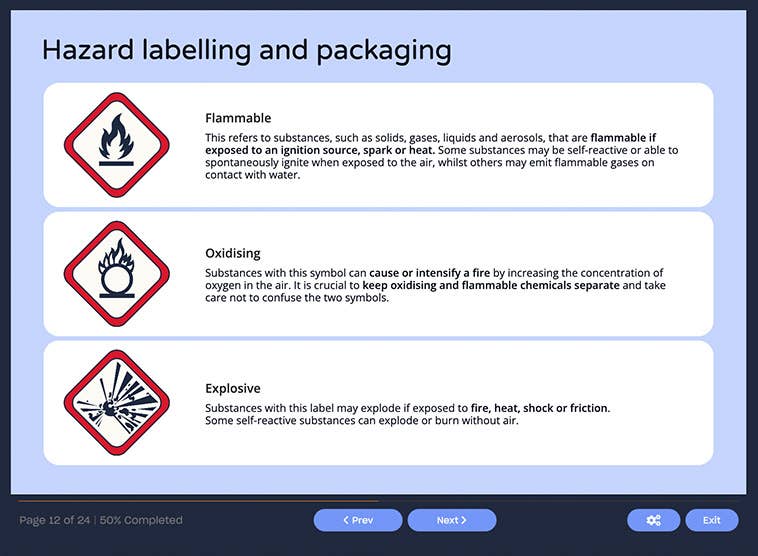
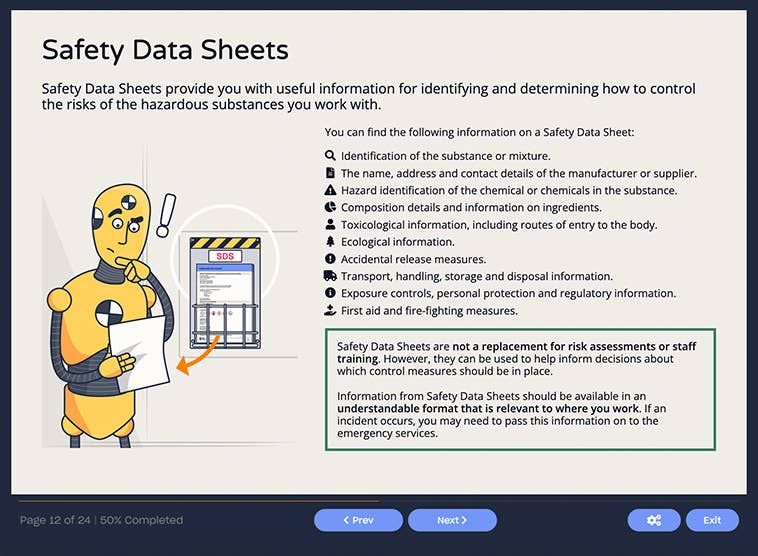
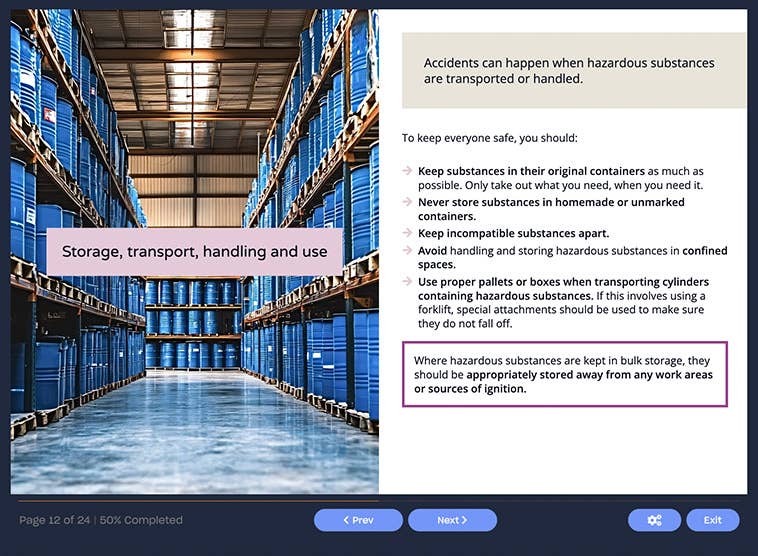
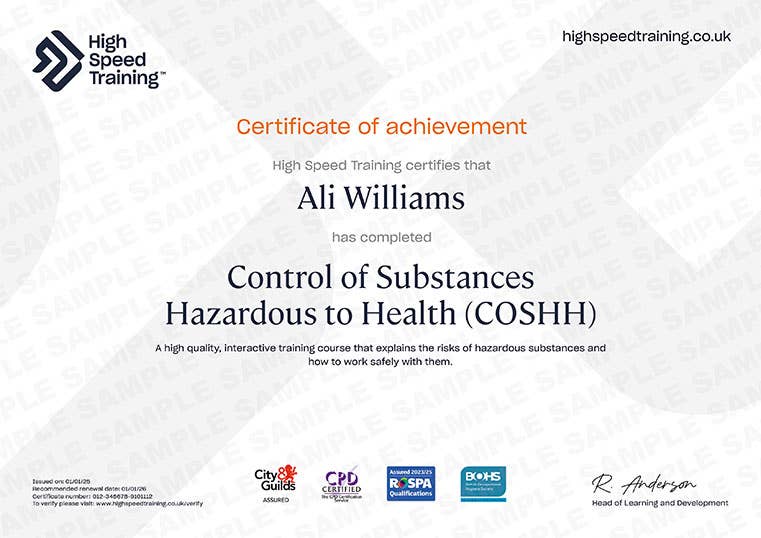




Every year, exposure to hazardous substances makes up a large portion of work-related injuries and illnesses. COSHH training is crucial to ensuring that everyone in the workplace can recognise the risks associated with hazardous substances and understand the precautions they can take to stay safe.
Employers have a legal duty to comply with the Control of Substances Hazardous to Health (COSHH) regulations and protect employee health by preventing or controlling exposure. By taking our COSHH training course, you will be equipped with the knowledge to fulfil your duties, including COSHH risk assessments, implementing control measures, monitoring exposure and health surveillance. This course contains a downloadable pack for you to take away, containing an overview of all your responsibilities under COSHH.
Employees also have a role to play in staying safe whilst working with hazardous substances. Our COSHH training course will provide you with a foundational knowledge of what hazardous substances are, what to expect of your employer and steps you can take to keep yourself and others safe. You will learn about the serious ill health effects of exposure, as well as the importance of following safe systems of work and any information, instruction and training you are given.
This module explores what hazardous substances are, how they can cause you harm and what you can do to keep yourself and others safe. It contains an additional section that you can choose to view if it is relevant to your role, covering duties under the regulations, COSHH risk assessments and the hierarchy of control.
This module outlines how control measures can help reduce the risk of harm from hazardous substances. It covers pre-use checks on protective equipment, understanding hazard labels and Safety Data Sheets, safe methods of handling hazardous substances and what is required in the event of an accident or emergency.
Once you have completed all of the online training material, you will be able to take the online assessment. The assessment consists of 15 multiple choice questions with a pass mark of 80%. The answers are marked instantly so you will know whether you have passed as soon as you finish.
If you don’t pass the assessment you can review the course material and take the assessment again as many times as necessary at no extra charge.
This COSHH training course provides suitable training for all levels of employees who work, or may come into contact with, hazardous substances in the workplace. All employees must have the necessary knowledge to be competent and do the job properly. This includes, but is not limited to, people who work in professions such as:
If you are a cleaner, our COSHH Training for Cleaners course may be more suitable for your needs.

In partnership with
Anne Mallory
Founder and Director of Mallory Health and Safety Consultants Ltd
Anne Mallory has worked in the health and safety sphere for over 25 years. As a founder and Director of Mallory Health and Safety Consultants Ltd, she has undertaken roles in the health and safety world including construction, decommissioning projects,emergency arrangements and business continuity planning in high hazard industries such as civil nuclear sites.
She is a Chartered Fellow of the Institution of Occupational Safety and Health, a former Council Member and Fellow of the International Institute of Risk and Safety Management, a Member of the Emergency Planning Society, a Member of the Institute of Safety in Technology and Research and a Senior Construction Manager through the Construction Skills Certification Scheme.
Anne holds a B.Sc. (Hons.) in Biology from the University of London and a M.Sc. in Ecotoxicology and Pollution Monitoring from the University of Luton as well as a British Safety Council Diploma in Safety Management.
Yes, our Control of Substances Hazardous to Health (COSHH) course can act as evidence of industry-related training for accreditation applications, such as CHAS. It covers the requirements of the Control of Substances Hazardous to Health Regulations 2002 (COSHH), which will help you understand how to fulfil the legal duties they set out. Knowledge of these topics form part of the training requirements set out by accreditation assessment bodies, so you must be able to demonstrate evidence of compliance in order for your application to be successful. Our course will contribute to the evidence you must provide during your application, to show that you have received the relevant training.
Please note that it will be down to each individual accreditation body to decide if our courses are sufficient for the training requirements of your specific business. This evidence only forms one part of your overall application process. It is up to you to prove you are fulfilling your legal duties and to supply sufficient evidence for everything the accrediting body requires in order for your application to be successful.
Yes. Our course includes information on how to conduct a COSHH risk assessment and also provides a blank template you can download to help you conduct the risk assessment.
Yes - upon completion of your training you'll be able to download a PDF copy of your certificate immediately whilst your formal certificate will be sent by post the next working day.
Quantity: 1